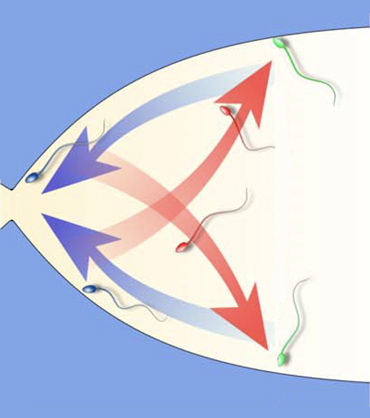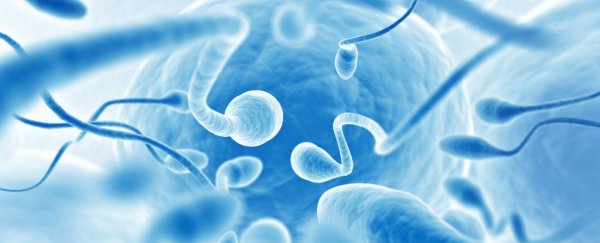The life of a sperm isn't easy. From cervix to egg, the female reproductive tract puts these tiny swimmers through an obstacle course of doom.
It's like being forced into a haunted house where the only way out is forward. At every turn there are more ways to die: bathed in acid, tangled in mucus, attacked by the immune system, flushed by the oncoming current, maybe even ensnared in a crypt.
It's a test not only of endurance, but also, as we are beginning to find out, of speed. Using models and computer simulations, a new study has found that only the most agile sperm can get themselves out of a tight spot.
When approaching a narrow juncture in the reproductive tract, like the opening from the uterus to the fallopian tubes, the oncoming current grows faster, allowing only the most worthy contestants through to the next stage.
Testing sperm from both men and bulls in a simulated female reproductive tract, the authors propose that these mammalian reproductive tracts have pinch points designed like gates to stop poor swimmers from reaching their goal.
A video from the research shows just how difficult these barriers can be to navigate. Time and again, the sperm in the footage can be seen trying to wiggle past a narrowing passage, known as a stricture, before being pulled back by the oncoming current.
The most surprising part, according to the authors, was how the sperm swam, moving in a pattern that looks like the wings of a butterfly. Keeping close to the walls, the sperm can be seen approaching the opening and oncoming fluid before being swept backwards to the opposite wall and giving the whole thing another shot on the other side.
In the end, however, the odds aren't good. Only the fastest are able to cling closely to the wall, and only a few more than that are lucky enough to pass. The rest are eventually caught in the current and swept away.
 (Zaferani et al., Science Advances, 2019)
(Zaferani et al., Science Advances, 2019)
It's not clear yet why these junctures exist, although it does make biological sense. The narrowings could be like other obstacles in the female reproductive tract, evolved to somehow weed out the weak contenders.
The authors of the new research think this is a distinct possibility, writing that their study "can quantitatively show that this hierarchical structure imposes competition among the sperm, with the fiercest competition occurring among highly motile microswimmers in comparison with the slower sperm."
Yet even for the fastest sperm, the chances of making it all the way to the end are abysmal.
For one single swimmer, there's something like a one in a million chance of making it to the egg, and a one in a hundred million chance of actually being the one to fertilise it.
It's an obstacle course that dishes up a deadly combination.
This study has been published in Science Advances.
